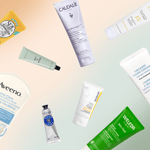4 ways to prevent and treat dry skin
I recently heard about a new Vaseline body lotion—Intensive Rescue Clinical Therapy Skin Protectant lotion—that was formulated to treat severely
 I recently heard about a new Vaseline body lotion—Intensive Rescue Clinical Therapy Skin Protectant lotion—that was formulated to treat severely dry skin. It’s a nice lotion, non-greasy and unfragranced, and is now available across the country for $6.49 to $8.49 for a 200 mL bottle. The people at Vaseline were also kind enough to share some tips on how to prevent and treat dry skin, a hot topic in Canadian winters (could it get any drier in my house?). Check them out, plus the related articles below.
I recently heard about a new Vaseline body lotion—Intensive Rescue Clinical Therapy Skin Protectant lotion—that was formulated to treat severely dry skin. It’s a nice lotion, non-greasy and unfragranced, and is now available across the country for $6.49 to $8.49 for a 200 mL bottle. The people at Vaseline were also kind enough to share some tips on how to prevent and treat dry skin, a hot topic in Canadian winters (could it get any drier in my house?). Check them out, plus the related articles below.
What it means to have dry skin
• Dry skin is often also considered sensitive skin.
• People with dry and/or sensitive skin have skin that is often easily irritated.
• The skin can react after being exposed to a trigger, i.e., a disruption in the skin’s natural moisture barrier, harsh irritants or environmental conditions.
Symptoms of dry skin include:
• Flakiness, scales, cracks
• Redness
• Soreness and/or tightness
• Burning, itching, tingling
Some tips for prevention and care of severely dry skin:
1. The clothes make the skin
• Make sure to wash clothing in mild detergents and avoid bleach and fabric softeners.
• Leftover detergents can irritate the skin, so take the time to double-rinse clothing.
• Natural fabrics such as cotton are the best choice for bedding and clothing. Avoid wearing synthetic fabrics and wool next to the skin.
2. Environmental concerns
• Try to avoid exposure to allergens and irritants, especially common ones such as dust, animal dander, smoke and grass.
• Exposing skin to very hot or very cold water can affect the skin’s moisture levels and exacerbate dry skin. Only shower when necessary to limit moisture loss.
• Dry skin responds best to a humid environment. Keep the indoor moisture level between 40 and 50 percent with the help of a humidifier. A hydrometer (humidity monitor) can help track humidity.
3. You are what you eat
• Eat a well-balanced diet that includes healthy fats. Fatty acids such as omega 3s are the building blocks of your skin’s natural, moisture-retaining oil barrier. Flax, walnuts and safflower oil, as well as cold-water fish such as tuna, herring, halibut, salmon, sardines and mackerel are excellent sources of omega 3s.
4. Handle with care
• Exfoliate your skin gently with a soft cloth or scrub to rid your skin of old cells so that moisturizer can penetrate deeper.
• Moisturize right after your shower to trap and lock in moisture on your skin.
• Protect your skin from the sun by using a moisturizer with a sun protection factor (SPF) of at least 30 that protects against UVA and UVB rays.
Related articles:
• Natural home remedies for dry skin
• The best body lotions to treat dry skin
• Our best healthy salmon recipes
Don’t miss a single Best Health Blog post—subscribe today via RSS or email!




